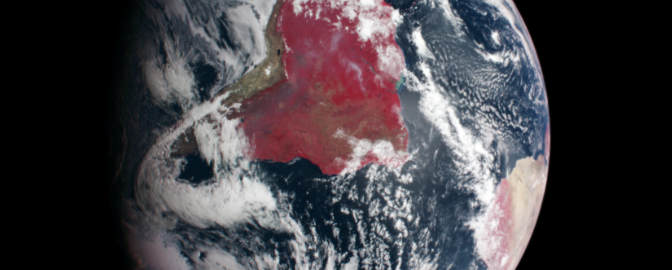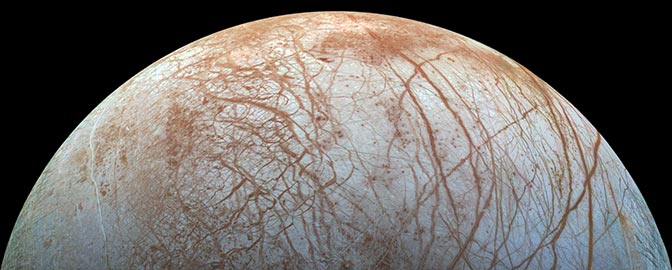Nancy Grace Roman Space Telescope (Roman)

Mission Overview
The Nancy Grace Roman Space Telescope (formerly the Wide-Field Infrared Survey Telescope or WFIRST) is an infrared observatory designed explore and directly image exoplanets, research dark energy, and perform galactic and extragalactic surveys including a microlensing survey of the inner Milky Way to find exoplanets down to a tenth of of the mass of the earth.
The payload consists of a telescope with a 2.4-m primary mirror and on-axis secondary mirror, yielding a field of view that is more than 100 times greater than that of the Hubble Space Telescope. Two instruments execute the science program: the Wide Field Instrument in the wavelength range of 0.48 - 2.3 micron and the Coronagraph Instrument operating in the range of 0.4-1.0 micron.
The Wide Field Instrument (WFI) features focal plane assembly consisting of eighteen, 4096 x 4096, 10-micron-pixel, HgCdTe detectors in a 6 x 3 array, providing an active area of 0.281 deg-square. The detectors have a pixel scale of 0.11 arcsec/pixel. Eight science filters (0.620, 0.869, 1.060, 1.293, 1.577, 1.842, 2.125, and 1.464 micron) provide an imaging mode covering 0.48-2.3 micron. A grism, covering the 1.00- to 1.93-micron range at a resolution of about 600, and a prism, covering the 0.75- to 1.80-micron range at a resolution of about 100, provide two slitless multi-object spectroscopy modes. WFI is cooled by a passive thermal design.
The Coronagraph Instrument is a technology demonstration and consists of two nominally identical, 1056 x 1037, 13-micron-pixel, electron multiplying charge coupled device (EMCCD) cameras, each with a pixel scale of 0.0218 arcsec/pixel. Four science filters (573.8, 659.4, 729.3, and 825.5 nm) provide narrow- and wide-field imaging at 0.5-0.8 micron and prism spectroscopy at 0.675-0.785 micron with a resolution of 47-75. The coronagraph includes two prisms for polarimetry measurements at 0 and 90 degrees, and 45 and 135 degrees. The field of views for imaging, spectroscopy, and polarimetry are 7.2, 4, and 3.8 arcsec, respectively.
The Nancy Grace Roman Space Telescope is planned to launch in 2027. It will be placed in a halo orbit around Sun-Earth Lagrange point L2. The nominal mission lifetime is five years.
Note: Mission information is from NASA's Space Science Data Coordinated Archive.
Spending Summary
| FY 2024 Total | By Jul of FY 2024 | By Jul of FY 2025 | Change from FY 2024 | |
|---|---|---|---|---|
| Obligations | $121.5M | $111.5M | $57.7M | $-53.8M |
| Outlays | $145.0M | $135.0M | $62.0M | $-72.0M |
Comparing Contract Obligations

Running sum of 25 awards. Shows cumulative actual spending by fiscal period. Period 2 represents combined Oct-Nov data (this is a reporting quirk of USASpending.gov). Negative values indicate adjustments or credits. Data last updated: 2025-09-18
Download OptionsWhat are obligations? Obligations represent NASA's legal commitments to spend money — contracts signed, grants awarded, and purchase orders issued. Unlike outlays (actual payments), obligations show when spending decisions are made.
Reading this chart: The chart displays cumulative obligations throughout the fiscal year (October through September). The solid line shows the current fiscal year's running total, while the dotted line (when available) shows the previous year for comparison. This allows you to see spending patterns and track whether funding is ahead or behind the prior year's pace.
Comparing Contract Outlays

Running sum of 25 awards. Shows cumulative actual spending by fiscal period. Period 2 represents combined Oct-Nov data (this is a reporting quirk of USASpending.gov). Negative values indicate adjustments or credits. Data last updated: 2025-09-18
Download OptionsWhat are outlays? Outlays represent actual cash payments made by NASA. While obligations show when spending decisions are made, outlays show when money actually leaves the treasury.
Reading this chart: The chart displays cumulative outlays throughout the fiscal year (October through September). The solid line shows the current fiscal year's actual spending, while the dotted line (when available) shows the previous year for comparison. This reveals the actual cash flow timing and whether spending is keeping pace with the prior year.


 Explore Worlds
Explore Worlds Find Life
Find Life Defend Earth
Defend Earth

